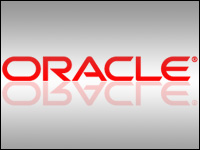
What a week that was. I am still digging out from two snowstorms and dealing with bone-chilling cold, and so are friends across the country, except in the Bay Area, which only makes me envious.
Perhaps none were as adversely affected as people on the LSD (that’s Lake Shore Drive for out-of-towners) in Chicago. I take solace in two forms: one, pitchers and catchers report this month, say no more; and second, from the Juncos pecking out a living in my back yard. To the Juncos, coming to Boston is flying south for the winter. Go figure.
Weather aside, the past week was emblematic, I think, of an economy bouncing back and an industry (ours) turning a corner, perhaps several.
Now What, Other Guys?
By now you’ve seen the Super Bowl and the Salesforce.com ads bracketing halftime. Last week the company went live with its fremium version of Chatter at the eponymously named site, Chatter.com. Smart move, divorcing Chatter.com from the Salesforce.com site; it gives Chatter users a more independent perspective and makes it more appealing, potentially, to congregants of other CRM faiths, and even agnostics.
I immediately have to ask what other vendors will do. Will Microsoft, SAP or Sage offer some form of integration with Chatter? What about NetSuite? Oracle offered some very good SocialCRM applications a while ago that anyone could use. Salesforce has done its part by making an ecumenical version of Chatter available. What’s the next move?
Speaking of NetSuite, the company announced subscription-billing functionality, which might best be described as Zuora or Aria lite. Subscription billing is a hot topic and a fast-growing market. Zuora recently raised an additional US$20 million because it could and opened up its European operations in the UK. Aria raised similar money, brought in new management and is now chasing Zuora.
The fact of this market’s viability says there are still pockets of undiscovered opportunity, and it may be a harbinger of further gravitation toward Tien Tzuo’s subscription economy. Regardless, it’s also a sign of the market for subscription services heating up.
A River of Black Ink
Speaking of heat and NetSuite, the company also announced fourth-quarter operating results. I am not a financial analyst, but there was a lot of heavy black ink in the report, so I think that’s good.
Some highlights from the press release:
- Record FY 2010 revenue of $193.1 million grows 16 percent over 2009, exceeds First Call consensus.
- 21% year-over-year increase in Q4 2010 recurring revenue to $44.2 million.
- 18% increase in FY 2010 recurring revenue to $164.0 million.
- 228% improvement in FY 2010 non-GAAP Operating income versus 2009.
It’s my job to observe now that 2009 and 2010 were not years anyone would wish to emulate, and while making comparisons with them is necessary, the comparisons aren’t that hard and ought to be taken with salt. But black ink is black ink, and NetSuite is making it. With revenues approaching $200 million dollars, we have a new class of proto-billion dollar companies looming, NetSuite and RightNow among them.
It is staggering to think, though, that Salesforce is so much bigger. 10X NY1?
In the background, I see plenty of evidence that revenue is on the agenda again. I’ve recently been communicating with Bruce Cleveland, a former high-ranking executive with Siebel, and for the last few years a general partner with the venture capitalist group InterWest Partners. Bruce’s vision of the next big turn in the industry is revenue performance management (RPM), a fire he’s been stoking for a couple of years. As you might recall from our last meeting, I am a fan of revenue, and companies like Cloud9 Analytics and rivals Eloqua and Marketo and many others are all over this idea like proverbial junkyard dogs. It helps that Cloud9 and Marketo are Bruce’s friends through capital.
Good for all of them. Nothing says recovery like a focus on revenue. Not that a focus on customer intimacy isn’t important too, but revenue gets it done like intimacy can’t.
The Newlyweds
Also, on Monday, Sant formally announced it was changing its name. The company had merged with Kadient last year, and the combined entity went by the necessary and awkward combined name while it came up with Qvidian. The new company is a mashup of its combined components into a more effective sales enablement package. While I wish them luck with this direction, I also hope they catch some RPM fever, because in my bones I think that’s the future.
In a bit of self-promotion, let me also draw your attention briefly to the new Beagle Short Tale Award (there is no misspelling here), which we announced on Tuesday. A short tale in this case is a short video used for communicating sales, marketing, service and educational information to customers. The award celebrates excellence in this new genre along numerous dimensions.
We invented the award for two reasons. First because there are so many very good examples of video being used in front-office situations, but also because we see a strong need for more of these productions. The cost of production today is so low and the probability of making good results so great that I think over a short time, slide decks will seem like ancient history or fax machines, but I repeat myself. And as an analyst, I must also muster up my courage and say the white paper will travel the same path. It’s ironic that I’ve been preaching change for all these years, and it now appears to be on my doorstep. What the heck, onward and upward.
























































